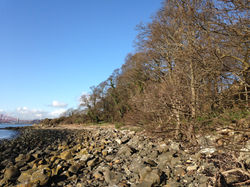White Flowers & Ladybirds
Every year is different when you sow wild flower seeds. This year we have a dominance of the white flowers of Oxeye Daisy covering the bank and giving rise to some criticism that the wild flower area does not look so good this year.

It is true that Oxeye Daisies grow very well in our soils and being perennials can take over. But, look a bit closer and there are still other flowers to be seen, a few scarlet poppies among the white, and the bright yellow of Hawkbit. Poppies suffered this year because of the limited rain that fell between late April and early June, but other flowers have fared better.

There is more Viper’s Bugloss and Yellow Rattle this year, both flowers that are well used by bumblebees.


But the Oxeye Daisy also has its wild life value. This year it was being well used by one of our bumblebee species, Red-tailed.

And, looking closer at the flowers showed that they were also popular with ladybirds. This is a bit surprising since the 7-spot Ladybirds seen on the flowers feed on Aphids, not on pollen or nectar. A closer examination however showed that the flowers where they were sitting were also being attacked by small brownish aphids, so they were sitting in a ring of aphid prey. When the photographs were taken there were still some larvae, but many had now passed through the pupal stage and were bright shiny adults.



They can sit on the flowers, conspicuous with their orange and black colouring, because they are very distasteful to birds and other predators of insects. When attacked they exude an unpleasant yellow liquid full of toxic alkaloids.
So, even the Oxeye Daisy has some evident wildlife value if you look closer, but in our management plans for next year we will aim to reduce its overall dominance and try and return a bit more balance to the colour on show.







































